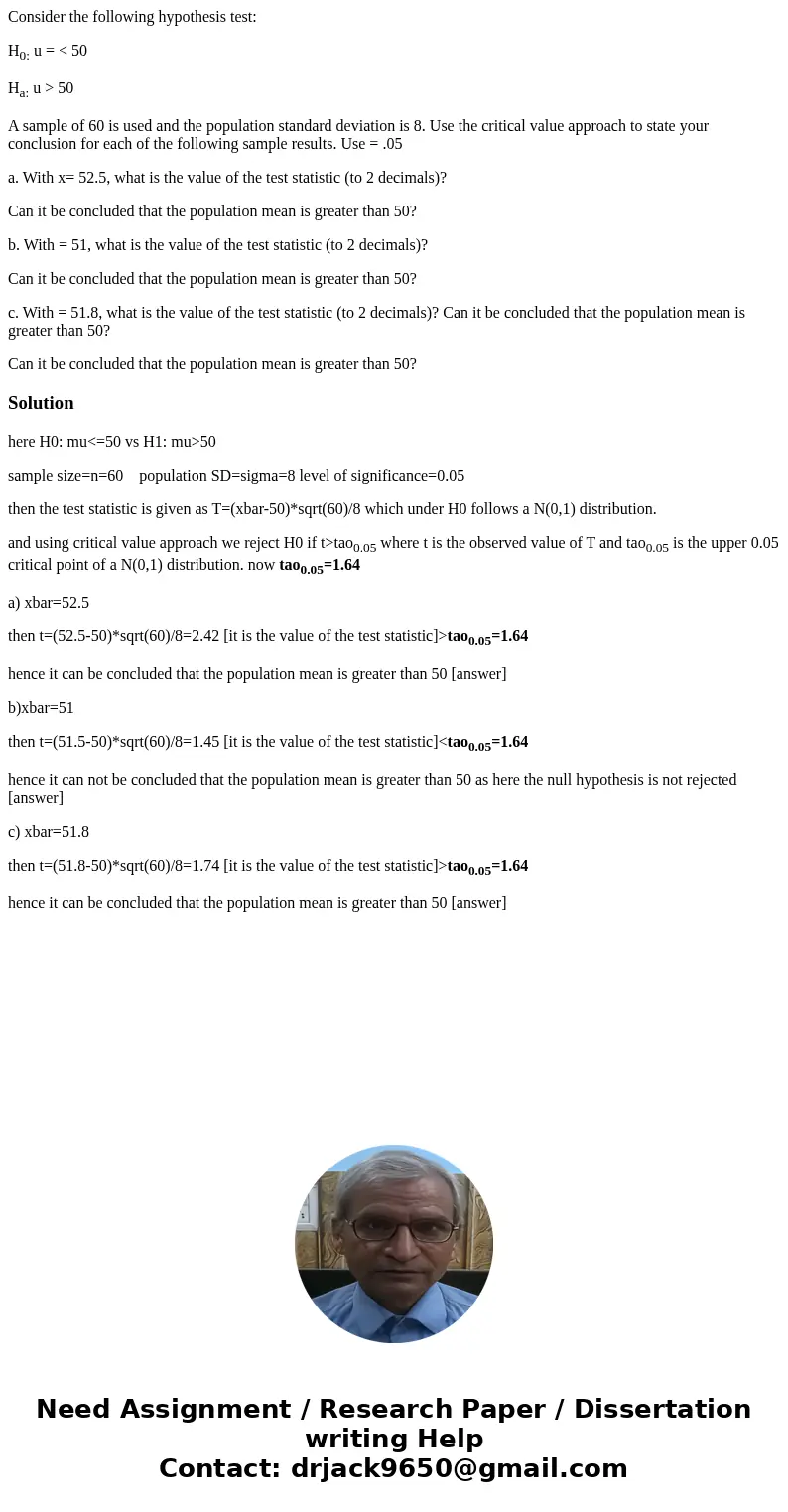Consider the following hypothesis test H0 u 50 Ha u 50 A
Consider the following hypothesis test:
H0: u = < 50
Ha: u > 50
A sample of 60 is used and the population standard deviation is 8. Use the critical value approach to state your conclusion for each of the following sample results. Use = .05
a. With x= 52.5, what is the value of the test statistic (to 2 decimals)?
Can it be concluded that the population mean is greater than 50?
b. With = 51, what is the value of the test statistic (to 2 decimals)?
Can it be concluded that the population mean is greater than 50?
c. With = 51.8, what is the value of the test statistic (to 2 decimals)? Can it be concluded that the population mean is greater than 50?
Can it be concluded that the population mean is greater than 50?
Solution
here H0: mu<=50 vs H1: mu>50
sample size=n=60 population SD=sigma=8 level of significance=0.05
then the test statistic is given as T=(xbar-50)*sqrt(60)/8 which under H0 follows a N(0,1) distribution.
and using critical value approach we reject H0 if t>tao0.05 where t is the observed value of T and tao0.05 is the upper 0.05 critical point of a N(0,1) distribution. now tao0.05=1.64
a) xbar=52.5
then t=(52.5-50)*sqrt(60)/8=2.42 [it is the value of the test statistic]>tao0.05=1.64
hence it can be concluded that the population mean is greater than 50 [answer]
b)xbar=51
then t=(51.5-50)*sqrt(60)/8=1.45 [it is the value of the test statistic]<tao0.05=1.64
hence it can not be concluded that the population mean is greater than 50 as here the null hypothesis is not rejected [answer]
c) xbar=51.8
then t=(51.8-50)*sqrt(60)/8=1.74 [it is the value of the test statistic]>tao0.05=1.64
hence it can be concluded that the population mean is greater than 50 [answer]

 Homework Sourse
Homework Sourse